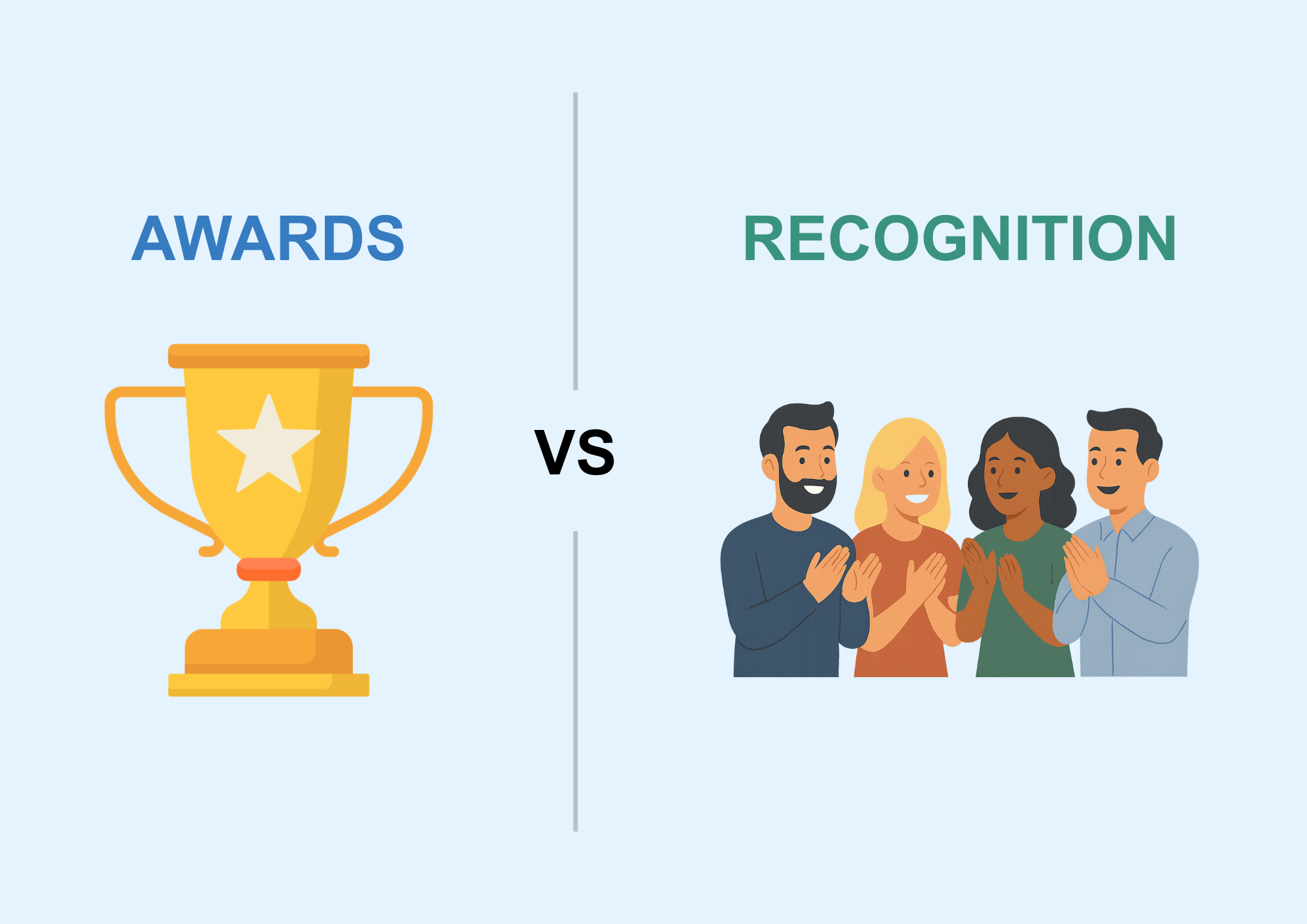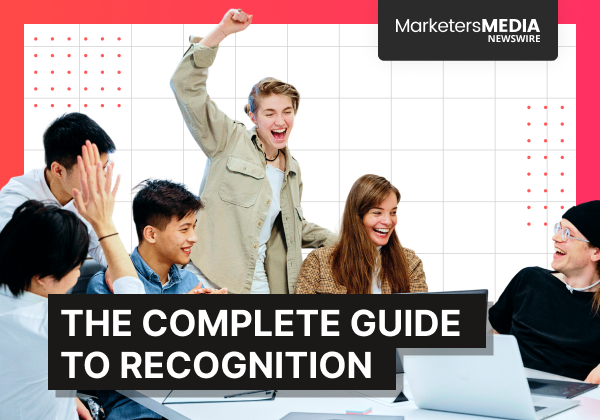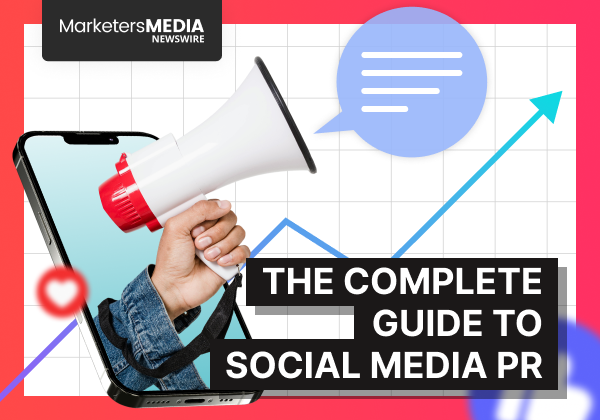Table of Content
- What Makes Awards and Recognition Effective?
- 1. Academic and Research Excellence
- 2. Professional and Corporate Recognition
- 3. Community and Humanitarian Impact
- 4. Arts and Cultural Recognition
- 5. Innovation and Technology Recognition
- How You Can Announce Them Through Strategic Communication
- Ready to Transform Your Recognition Strategy?
Successful organizations know a secret: making people feel valued isn't just "nice," it's strategic.
Recognition is a powerful business tool that reshapes culture, supercharges productivity, and builds lasting loyalty.
Appreciated employees are far more engaged and much more likely to stay put, but many leaders fall short with generic recognition.
The real question isn't whether recognition matters, but rather, are you truly doing it effectively?
What Makes Awards and Recognition Effective?
Before diving into examples, you need to understand the key difference between awards and recognition—and why both matter.
Awards are formal, tangible tokens of achievement—think certificates, trophies, or titles like "Employee of the Year." They follow structured evaluations, celebrate significant milestones, and appeal to extrinsic motivation.
Recognition is broader and more immediate. It acknowledges contributions, efforts, and positive behaviors through both formal and informal means, like a sincere thank-you or a public shout-out. This builds emotional connections and taps into intrinsic motivation.
The Psychology Behind Effective Recognition
Via Edstellar
Remember that great feeling when someone truly appreciated you? That's dopamine at work, boosting your mood, sleep, and stress levels. Genuine recognition fulfills our basic need to feel accomplished and valued, making your brain light up like a Christmas tree.
But here's the thing—not all recognition is created equal. You've probably experienced both kinds: the recognition that made your day and the kind that felt hollow or forced.
The difference boils down to six key principles:
- Get Specific About What They Did: “Great job” is vague. Point out exactly what they did so they know what to repeat.
- Don't Wait for the Perfect Moment: Recognition has an expiration date. The longer you wait, the less it matters. Catch people doing things right and tell them immediately.
- Know How Each Person Likes to Be Appreciated: Not everyone likes the spotlight. Recognize people the way they prefer.
- Make It Real: Only give praise you mean. Forced compliments do more harm than good.
- Connect the Dots to Something Bigger: Link their work to a bigger goal. "This report you created will help us serve 500 more families next quarter" is infinitely more powerful than "nice report."
- Make Appreciation a Habit, Not an Event: Recognition should be daily, not annual. Build it into your culture.
Awards vs. Recognition: When to Use Each

Use Awards When:
- Celebrating major achievements or milestones
- Creating aspirational targets for performance
- Marking significant project completions
- Recognizing long-term service or dedication
- Building external credibility and reputation
Use Recognition When:
- Acknowledging daily efforts and contributions
- Reinforcing desired behaviors immediately
- Building team morale and connection
- Showing appreciation for small wins
- Creating ongoing culture of appreciation
The most effective programs blend both approaches strategically, using awards for major milestones and recognition for continuous motivation.
1. Academic and Research Excellence
Nobel Prize sets the global standard for academic recognition. Established in 1895, these awards honor breakthrough contributions in science, literature, and peace. Its rigorous selection process involves nominations from top academics, thorough expert review, and a 50-year seal on records to maintain integrity.
Pulitzer Prize recognizes excellence in journalism, literature, and music since 1917. With over 100 judges serving on 22 juries, the Pulitzer has evolved to include online reporting and diverse artistic forms, demonstrating how prestigious awards adapt to changing times.
Fields Medal honors mathematicians under 40 every four years, while the Turing Award celebrates computer science contributions—often called the "Nobel Prize of computing."
Educational institutions use various recognition approaches:
- Academic Honors: AP Scholar distinctions, National Honor Society membership, perfect attendance awards.
- Competition Recognition: Science fair placements, International Mathematical Olympiad achievements, debate tournament honors.
- Peer Recognition: Student-nominated teacher appreciation, collaborative project acknowledgments.
2. Professional and Corporate Recognition
Malcolm Baldrige National Quality Award represents the U.S. presidential honor for organizational excellence. Since 1987, it evaluates companies across sectors using comprehensive criteria covering leadership, strategy, workforce, and results.
Edison Awards celebrate innovation in product development and design, while the IEEE Medal of Honor recognizes technical excellence in electrical engineering.
Leading companies design recognition systems that align with their values:
Hilton's Recognition Calendar provides managers with 365 appreciation ideas, making recognition a daily operational priority. This practical tool ensures consistency across global properties.
Zappos' Peer-to-Peer Program allows employees to award "Zollar" bonuses to colleagues, redeemable for merchandise or charitable donations. This system empowers direct colleague appreciation and reinforces company culture.
Google's "20% Time" gives employees freedom to pursue personal projects, demonstrating recognition through autonomy and trust—often leading to innovations that benefit the company.
Common internal recognition includes:
- Employee Spotlights: Monthly features in newsletters, social media, or company meetings.
- Milestone Celebrations: Service anniversaries, project completions, personal achievements.
- Peer Nominations: Colleague-driven appreciation for teamwork and collaboration.
- Flexible Rewards: Extra time off, remote work options, professional development opportunities.
- Experiential Recognition: Team lunches, company outings, conference attendance.
3. Community and Humanitarian Impact
Nobel Peace Prize honors individuals and organizations promoting international cooperation and peace. Recipients range from early pacifist leaders to modern human rights advocates.
Conrad N. Hilton Humanitarian Prize offers $2.5 million—the world's largest annual humanitarian award—to nonprofits alleviating human suffering. The rigorous selection process requires established organizations with audited financials and proven impact.
Nansen Refugee Award recognizes outstanding service to displaced persons, while the Aurora Prize for Awakening Humanity honors individuals who risk themselves to save others.
Community recognition often focuses on:
- Volunteer Appreciation: Certificates, public profiles, thank-you events, social media features.
- Service Awards: Recognizing community contributions, charitable work, mentorship.
- Environmental Stewardship: Acknowledging sustainability efforts and conservation work.
- Educational Support: Honoring tutoring, scholarship contributions, school volunteering.
4. Arts and Cultural Recognition
Grammy Awards represent music industry excellence across genres, while the Turner Prize honors visual artists in Great Britain with outstanding exhibitions.
Venice Biennale's Golden Lion celebrates international contemporary art biennially. The Pritzker Prize serves as architecture's highest honor, often called the "Nobel Prize of architecture."
Cultural organizations use recognition to:
- Showcase Talent: Featured artist programs, gallery exhibitions, performance opportunities.
- Build Audiences: Community choice awards, patron appreciation events.
- Support Development: Mentorship programs, residency opportunities, skill-building workshops.
5. Innovation and Technology Recognition
Turing Award celebrates computer science breakthroughs, while industry-specific awards like the Webby Awards honor digital excellence.
Technology companies often recognize:
- Innovation Projects: Internal hackathons, patent applications, creative problem-solving.
- Technical Excellence: Code quality, system improvements, security enhancements.
- Knowledge Sharing: Conference presentations, internal training, mentorship.
- Collaboration: Cross-team projects, open-source contributions, community building.
How You Can Announce Them Through Strategic Communication
Creating meaningful recognition is only half the battle. Strategic announcement and communication amplify impact, build credibility, and inspire others.
Internal Announcement Strategies
Multi-Channel Communication: Use various internal channels to ensure broad awareness. Company newsletters, intranet features, team meetings, and digital displays create comprehensive coverage.
Leadership Engagement: Have executives personally present awards or send congratulatory messages. This demonstrates organizational commitment and adds prestige to recognition.
Storytelling Approach: Don't just announce the award—tell the story. Explain what the recipient did, why it matters, and how it connects to company values and goals.
Visual Documentation: Capture award ceremonies, team celebrations, or recognition moments through photos and videos. Visual content creates lasting memories and shareable moments.
Peer Amplification: Encourage colleagues to add their congratulations and share personal experiences working with recipients. This peer validation enhances recognition impact.
External Communication and Press Releases
Strategic external communication transforms internal recognition into broader reputation building and stakeholder engagement.
Press Release Fundamentals: Effective press releases for recognition announcements include:
- Clear, newsworthy headlines highlighting the achievement
- Specific details about what was accomplished and why it matters
- Quotes from leadership and recipients providing human interest
- Company background establishing credibility and context
- High-quality photos or videos supporting the story
Distribution Strategy: Platforms like MarketersMEDIA Newswire can amplify your recognition announcements across 550+ media outlets including AP News, Business Insider, and Benzinga. With 5.9 billion potential reach across 160 countries, strategic distribution ensures your recognition stories gain maximum visibility and credibility.
Industry Publication Targeting: Identify trade publications, professional associations, and industry blogs relevant to your recognition story. Tailored pitches to niche audiences often generate better coverage than mass distribution.
Social Media Amplification: Create shareable content across LinkedIn, Twitter, Facebook, and Instagram. Use relevant hashtags, tag involved parties, and encourage sharing to extend reach organically.
Community Engagement: Local newspapers, chamber of commerce publications, and community websites often welcome positive business stories, especially those highlighting employee achievements or community contributions.
Digital Content Creation for Recognition
Employee Spotlight Content: Celebrate award recipients with detailed profiles of their background, achievements, and future goals. Ideal for your company blog, LinkedIn, and newsletters, these stories become even easier to create at scale with tools like SurgeGraph, helping you develop compelling, humanized content that sounds natural.
Video Recognition: Short interview videos with award recipients create engaging content for multiple platforms. These personal stories resonate more than written announcements alone.
Interactive Content: Create recognition ceremonies that can be live-streamed, recorded for later viewing, or shared across multiple channels simultaneously.
Measuring Recognition Communication Impact
Track the effectiveness of your recognition communications through:
- Engagement Metrics: Views, shares, comments, and time spent on recognition content
- Media Coverage: Number and quality of pickup from press releases and announcements
- Internal Feedback: Employee surveys measuring awareness and appreciation of recognition programs
- External Recognition: Industry awards or mentions resulting from your recognition communications
- Recruitment Impact: Candidate mentions of recognition programs during interviews or applications
Building Recognition Into Regular Communications
Newsletter Features: Dedicate regular newsletter sections to employee recognition, community awards, or achievement spotlights.
Website Integration: Create dedicated recognition pages showcasing awards, testimonials, and achievement stories.
Annual Recognition Events: Host annual award ceremonies that become anticipated calendar events, complete with professional photography, catering, and family invitations.
Partnership Opportunities: Collaborate with industry associations, community organizations, or media partners to co-host recognition events or create award sponsorships.
Ready to Transform Your Recognition Strategy?
Recognition isn’t a feel-good extra—it’s a proven driver of engagement, performance, and retention.
Companies that do it well, see 31% lower turnover, 14% higher productivity, and 20% stronger business outcomes. The most successful organizations treat recognition as a strategy, not a gesture.
Start small but start today. Audit what’s working, train your leaders, and make recognition part of your everyday culture.
With consistency, authenticity, and the right communication plan, your recognition efforts can fuel loyalty, spark performance, and shape a thriving workplace.
Free Press Release Template
Tell us where to send your PDF:










![10 Free Press Release Templates [Plus a Step-by-Step Guide]](https://marketersmedia.com/wp-content/uploads/2024/08/10-Free-Press-Release-Templates-Plus-a-Step-by-Step-Guide.png)